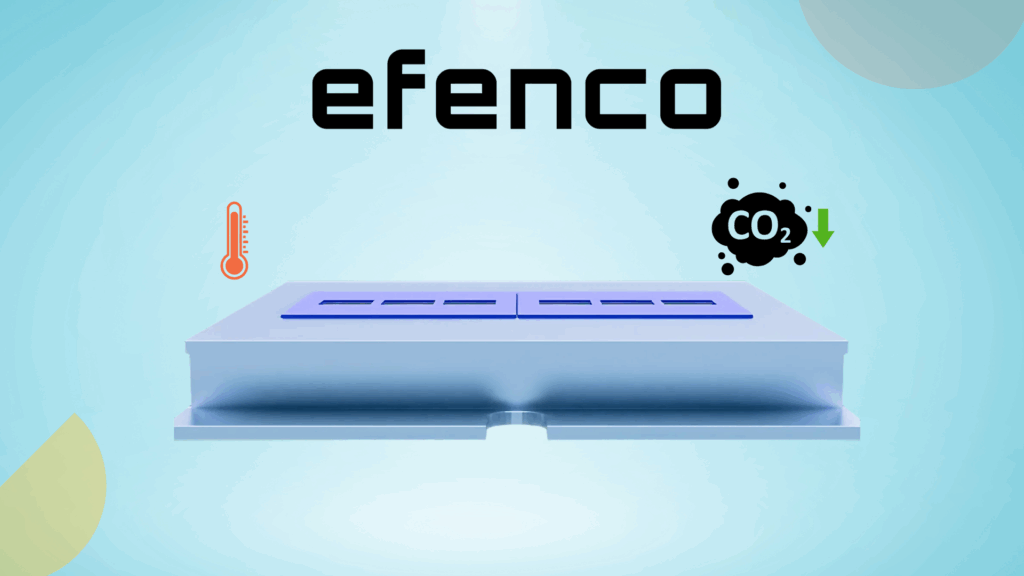This is the second article of our 4-part Edge Computing Market Research Series. In this article, we will talk about the major technical challenges of Edge computing and the solutions provided by the companies researching it.
The advancement of the Internet of Things (IoT) and Cloud Computing have pushed the horizon for a new paradigm in computer science that calls for processing the data at edge networks – i.e., edge computing. Edge Computing essentially takes memory and computing out of traditional data centers to bring them as close as possible to the location where they are needed, like mobile phone devices, tablets, wireless earphones, etc.
This technology has the potential to provide a reasonable computation platform when compared to the cloud, thus enhancing battery life, data safety, and privacy. However, integrating edge computing into other sectors is not void of challenges.
There are still a few major challenges that need to be overcome to make edge computing efficient, stable, and user-friendly. Gladly, companies around the globe are actively working on developing solutions for these problems and are protecting them via patenting to profit from the R&D.
Below we have listed some of these patent solutions for the major technical challenges being faced in edge computing
Challenge: Network Bandwidth
In traditional networks, enterprises would allocate higher bandwidth at central data centers and lower bandwidth to the endpoints. Whereas, in an edge computing server, more bandwidth is required across all individual ends of the server. This creates a need for more bandwidth when compared to the traditional networks.
Solution
The Chinese state-owned telecom giant China United Network Communications filed a patent (CN109151512A) which provides a solution for coping up with Bandwidth issues in Edge Computing. As per the current scenario, the Edge Computing server needs to allocate higher bandwidth to data centers as well as endpoints therefore, the edge server requires comparatively more bandwidth than the traditional network which, in turn, leads to excessive consumption of data.
This patent provides a unique Control Delivery Network (CDN) in which each edge server is marked with a fixed threshold value of bandwidth consumption. If due to any terminal request, the current load exceeds the preset threshold, the target content extraction request is transferred to the other edge server having a higher threshold value.
Challenge: Distributed Computing
In most of the servers, the set of modules are placed far apart from each other in a distributive manner. Whereas, edge computing tends to bring all the systems closer to the computational areas. This creates a conflict as the business server needs to consider the edge server as an additional aspect during computation.
Solution
Beijing Zhixin Microelectronics Technology which is a subsidiary of State Grid Information and Communication Industry Group filed a patent (CN110636007A) which suggests a solution to solve the issues which result due to Distributed Computing.
Due to the limited processing capacity, a large number of distributed edge nodes cannot provide all services completely and independently and need to cooperate with other edges or cloud data centers through an optical transport network which itself needs to provide a large number of routes to fulfill the requirements of distributed edge node in areas like autonomous cars and blockchain.
This invention suggests to breaks down the entire edge server into multiple routes with route arranging devices located at the edge center. On receiving a connection request, the appropriate route is searched (by matching source and destination node requirements) and if not found, a new route is formed as per the service and bandwidth requirements.
Challenge: Latency
Latency is essentially the delay caused by data transmission. In an edge server, if the computation is taking place closer to data or if the compute is only happening at the center, latency can be reduced. But usually, due to distributive computing and both-ways computation, latency issues occur.
Solution
The South Korean electronics giant Samsung filed a patent (WO2020167074A1) that suggests a solution for lags caused due to latency.
This invention suggests that by analyzing network architecture comprising of an edge data center and edge nodes, programmatically expected latency associated with both node and core can be determined. After this, the difference between the latency of both can be devised out on basis of which, the edge transfer process can be optimized.
Challenge: Security and Encryption
Each device in an edge server represents another potentially vulnerable endpoint, and the internet of things (IoT) is notorious for its lack of robust security. Also, smaller data centers like embedded devices are not designed in accordance with security measures and aren’t updated as often as they should be.
Solution
The Chinese multinational automotive company Zhejiang Geely Group filed a patent (CN111654375A) which provides a solution to security and encryption issues in edge computing. Zhejiang Automotives has recently partnered with Baidu Technologies to step into the domain of electric and autonomous cars.
Due to the high amount of data exchange between the data center and the edge, edge computing poses high technical and physical security issues. Also, in the case of the embedded or micro-embedded devices as a part of an edge server, security mechanisms need to be scaled and decentralized. Also, it requires more hardware.
The invention relates to a blockchain-based edge computing security encryption method in which, the autonomous car receives a traffic data request from the edge module. The car (edge data center), authenticates the request using a multi-level verification system based on encryption and blockchain and accordingly generates action in the steering edge node.
Challenge: Operational Constraints
Due to multiple edge receivers placed at certain distances from the data center, troubleshoot and repair of any issue that occurred in the framework needs a lot of logistic as well as manual input hence increasing the cost of maintenance.
Solution
American multinational giant INTEL filed a patent (WO2020226979A2) which provides an effective solution to cope up with operational constraints and avoid high maintenance, logistical as well as repair costs.
This invention suggests methods to design a tool comprising of multiple chipsets which are situated at multiple edges in the entire server. These chipsets identify the software and hardware resources needed to troubleshoot certain issues in order to reduce the human effort every time if a node underperforms or goes down.
Challenge: Data Accumulation
Collecting huge chunks of data at either the edge server data center or the edge node poses many security and accessibility issues. Also, the transfer of bigger quantities of data needs more innovative techniques which are yet being researched in the market.
Solution
Data is a major business asset and collecting huge chunks of data at the edge is itself a liability. Japanese telecommunication company NTT Communications filed a patent (WO2020116611A1) which provides a solution to solve the data accumulation challenge.
The patent suggests a data retrieval server with an industrial information table for storing edge IDs. These IDs correspond to edge servers operated and managed by a company by associating the edge IDs with an industry ID for identifying industry and an ID of the company/organization belonging to the industry. In this way, a huge amount of data can be divided, stored, and accessed easily in an edge network.
Challenge: Moving System Constraints
Most of the devices applying edge computation such as mobile devices, laptops, in-ear-monitors as well as wireless earphones are a part of a mobile frame or are with a person in most cases. Implementing exchange of data, security, access to cloud/internet and many other features in moving state is a challenge that needs to be overcome.
Solution
The areas like Mobile Edge Computing, when the edge server is moving, and various functionalities of the edge server (especially task migration system) might not function properly. One of China’s elite C9 league institutes Harbin Institute of Technology filed a patent numbered CN111031102A which provides a solution to the challenges caused when the frame is moving.
In this invention, various tasks are allocated separate edge servers so that, at one time from one system, only a single task (Single edge server) is active. This, in turn, reduces exchange between edge data center and node, thus reducing inefficiency caused due to mobility of edge node.
Challenge: Unified Architecture and Release Processes
In order to accommodate distributive computing with feasible bandwidth requirements and achievable logistics, a better architecture is required to exploit edge computing features in a better way.
Solution
Complex, inefficient and unstable architecture if applied by the traditional methods depletes the performance of Edge deployment targets as well as traditional data centers. The patent numbered CN109995546A filed by Shenyang Institute of Automation suggests a unique and effective architecture for edge networks.
The invention suggests architecture with separate data collecting layer, a cloud computing processing layer, and an edge computational processing layer. The data collection layers gather plant data whereas the two computing layers form the network for calculating an edge event and providing the preset output. An edge calculation processing layer is connected with industrial SDN (Software-delivery network) through a global decision module.
Concluding Notes
Edge Computing is still is a growing sector and many companies are now working on it to develop an “edge” portfolio. Big companies like IBM, Intel, Amazon, Google, Huawei, etc. have already developed their portfolio for providing Edge computing services and solutions.
There’s a lot of brewing and you would want to know more. This is why in the third part of the edge computing series, we have focused on the major companies and their “Edge portfolio” along with their research activities, collaborations, and acquisitions related to Edge computing technology. You can click here to read the article.










